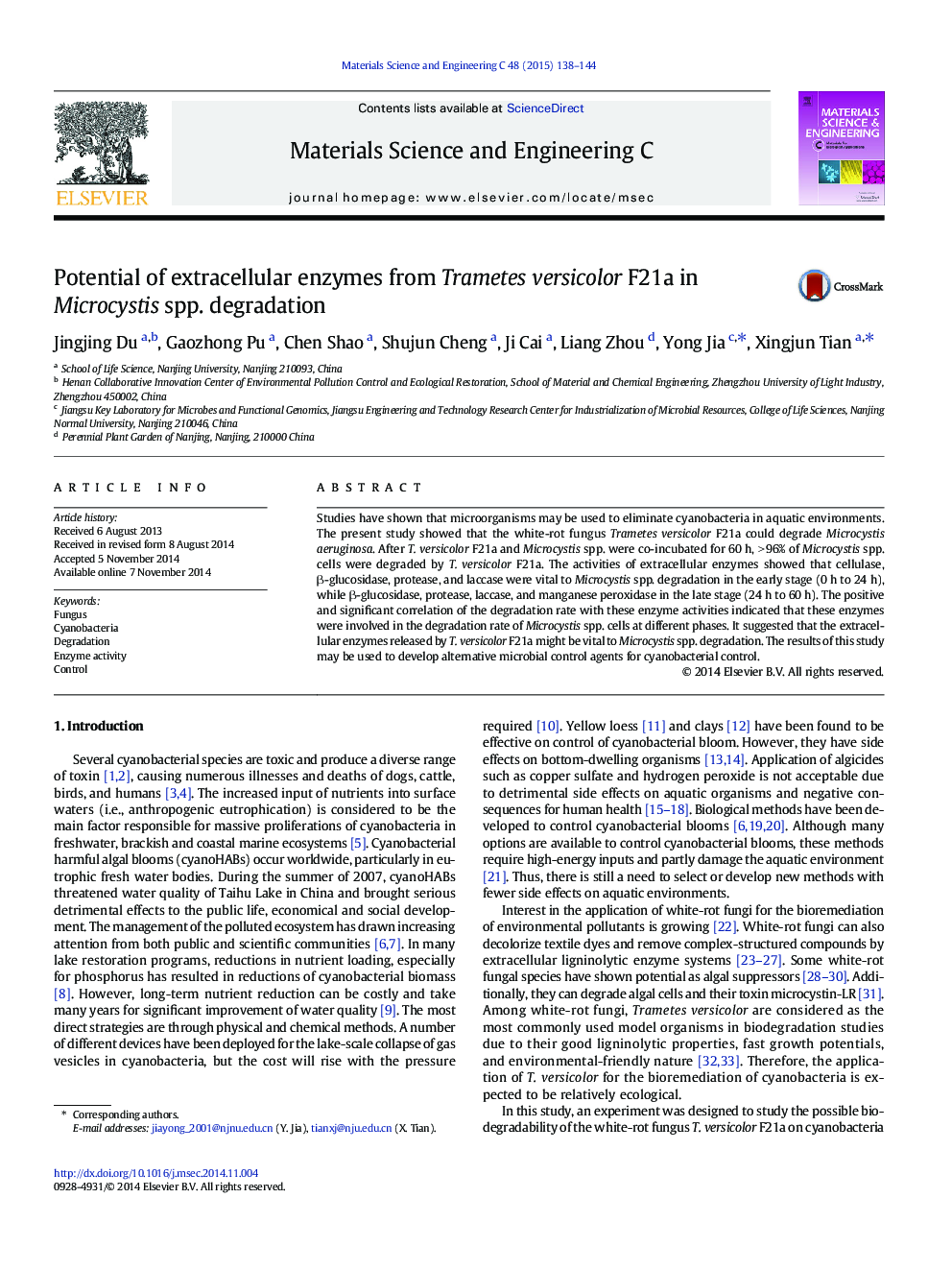| Article ID | Journal | Published Year | Pages | File Type |
|---|---|---|---|---|
| 1428442 | Materials Science and Engineering: C | 2015 | 7 Pages |
•Trametes versicolor F21a exhibits strong ability on degrading Microcystis strains.•Dried masses of F21a increased while the Microcystis spp. cells are degraded.•Extracellular enzymes released by F21a significantly increased during incubation.•These enzymes may have great potential for the degradation of cyanobacteria.
Studies have shown that microorganisms may be used to eliminate cyanobacteria in aquatic environments. The present study showed that the white-rot fungus Trametes versicolor F21a could degrade Microcystis aeruginosa. After T. versicolor F21a and Microcystis spp. were co-incubated for 60 h, > 96% of Microcystis spp. cells were degraded by T. versicolor F21a. The activities of extracellular enzymes showed that cellulase, β-glucosidase, protease, and laccase were vital to Microcystis spp. degradation in the early stage (0 h to 24 h), while β-glucosidase, protease, laccase, and manganese peroxidase in the late stage (24 h to 60 h). The positive and significant correlation of the degradation rate with these enzyme activities indicated that these enzymes were involved in the degradation rate of Microcystis spp. cells at different phases. It suggested that the extracellular enzymes released by T. versicolor F21a might be vital to Microcystis spp. degradation. The results of this study may be used to develop alternative microbial control agents for cyanobacterial control.
